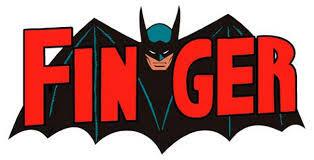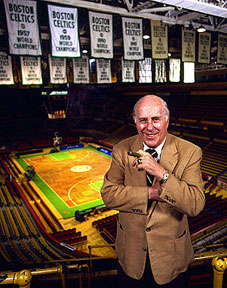 There were a couple of things that stood out during Sunday’s New York City Marathon. Let’s start with Lance Armstrong first.
I was struck at the production surrounding Armstrong’s marathon debut that was magnified when the cameras panned back on the web cast and showed the famous cyclist and philanthropist running in a phalanx of security pals, famous Nike runners, a pace car and the “Lance Cam.”
There were a couple of things that stood out during Sunday’s New York City Marathon. Let’s start with Lance Armstrong first.
I was struck at the production surrounding Armstrong’s marathon debut that was magnified when the cameras panned back on the web cast and showed the famous cyclist and philanthropist running in a phalanx of security pals, famous Nike runners, a pace car and the “Lance Cam.”
In interviews Armstrong talked about how he was excited to be a mid-packer – which he kind of is with his 2:59:36 finishing time. But when was the last time a mid-packer had Alberto Salazar, German Silva, Joan Samuelson and Hicham El Guerrouj say anything other than, “you’re welcome for the autograph…” Forget about acting as a rabbit or handing over drinks or gels.
The absolute genius of Armstrong’s run in New York didn’t dawn on me until I was about 2 miles into today’s run (a 14-miler in 1:35:26). Asics, the sponsor of runners Deena Kastor and Stefano Baldini, was the “official” sponsor of the race. The shirts, jackets, caps, etc. that runners bought or were given at the expo were branded with the Asics logo. So too was the finish line area and mile markers. Asics clearly spent a lot of money to be the “official” sporting goods sponsor of the ING New York City Marathon.
But all anyone will talk about is the Nike guy and his Nike pals breaking 3-hours.
Nike knows marketing. In fact I wouldn’t be surprised if Nike suggested to Armstrong that he run the New York City Marathon. Why not? Nike already had all of the top runners, how about the 3-hour guys, too.
Shrewd. Very shrewd.
 Ready, set... uh... go?
The other thing that struck me was how passive and tentative the top runners were. Chalk this up to the deep field where every runner knew each other’s credentials and chose to err on the side of caution. When eventual winner Marilson Gomes dos Santos made his move on First Avenue before crossing in to the South Bronx just shy of the 20th mile, the ever-dwindling main pack of runners just allowed him to waltz ahead. It seemed as if everyone in the pack was watching Paul Tergat. When Tergat didn’t break after the Brazilian, no else did either.
Ready, set... uh... go?
The other thing that struck me was how passive and tentative the top runners were. Chalk this up to the deep field where every runner knew each other’s credentials and chose to err on the side of caution. When eventual winner Marilson Gomes dos Santos made his move on First Avenue before crossing in to the South Bronx just shy of the 20th mile, the ever-dwindling main pack of runners just allowed him to waltz ahead. It seemed as if everyone in the pack was watching Paul Tergat. When Tergat didn’t break after the Brazilian, no else did either.
That is until it was too late.
Afterwards, according to the Chasing KIMBIA site, Tergat told second-place finisher Stephen Kiogora that “we let him get to far away.”
Well, yeah.
The same thing happened in the women’s race, too, only the star-studded women’s field allowed the defending NYC champ build a 20-second lead after one mile that quickly turned to a minute for most of the race. By the time Jelena Prokopcuka was blowing kisses to the crowd in Central Park while jogging in the final mile, her name had already been engraved on her trophy.
 Like Tergat, women’s favorite Kastor said the women’s race was too tactical.
Like Tergat, women’s favorite Kastor said the women’s race was too tactical.
“I think we were being a little tentative, and by the time it was ready to roll it was too late,” she told reporters. “I think out of respect to the other women. I think we were all tentative in seeing what the others wanted to do.”
Those tactics by some of the best runners in the world are baffling. After months of training, planning and hype, when it came time to get dirty and be aggressive, only two runners went after it.
“To win a marathon you have to have courage,” dos Santos said.
Americans? The 2006 New York City Marathon turned out to be just a typical outing for American runners. On the women’s side, Kastor finished sixth in 2:27. She chalked her disappointing finish up to just one of those days.
 Meanwhile, stomach trouble ruined Alan Culpepper and Meb Keflezighi’s day. Culpepper dropped out in the Bronx after 20 miles, while Meb, who finished in second and third in the past two years, limped home in 2:22:02. According to The New York Times, Keflezighi got food poisoning in New York on Thursday and drank Pepto-Bismal before the race on Sunday morning.
Meanwhile, stomach trouble ruined Alan Culpepper and Meb Keflezighi’s day. Culpepper dropped out in the Bronx after 20 miles, while Meb, who finished in second and third in the past two years, limped home in 2:22:02. According to The New York Times, Keflezighi got food poisoning in New York on Thursday and drank Pepto-Bismal before the race on Sunday morning.
It didn’t help.
Californian Peter Gilmore, who is not sponsored by Nike, adidas or Asics, was the top American in 2:13:13. That’s Gilmore’s second-best time ever, and a good encore for his seventh-place finish in 2:12:45 in Boston last April.
Wonder boy Dathan Ritzenhein ran 2:14:01 in his highly anticipated marathon debut. Ritzenhein ran a 61-minute half marathon in his tune up before New York, which made him a pre-race top 10 pick, but as veteran marathoners know, the race is fickle and tricky. If you have a weakness, the marathon will expose it.
That fact is the only guarantee about marathon running.





















